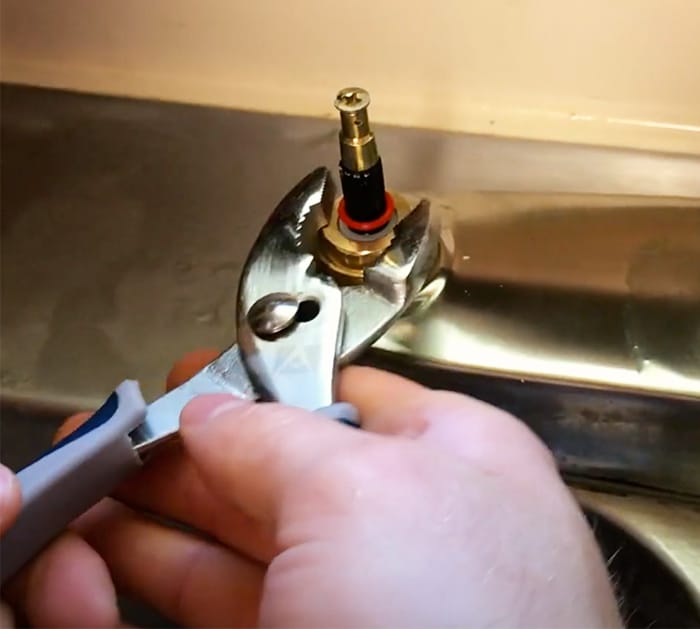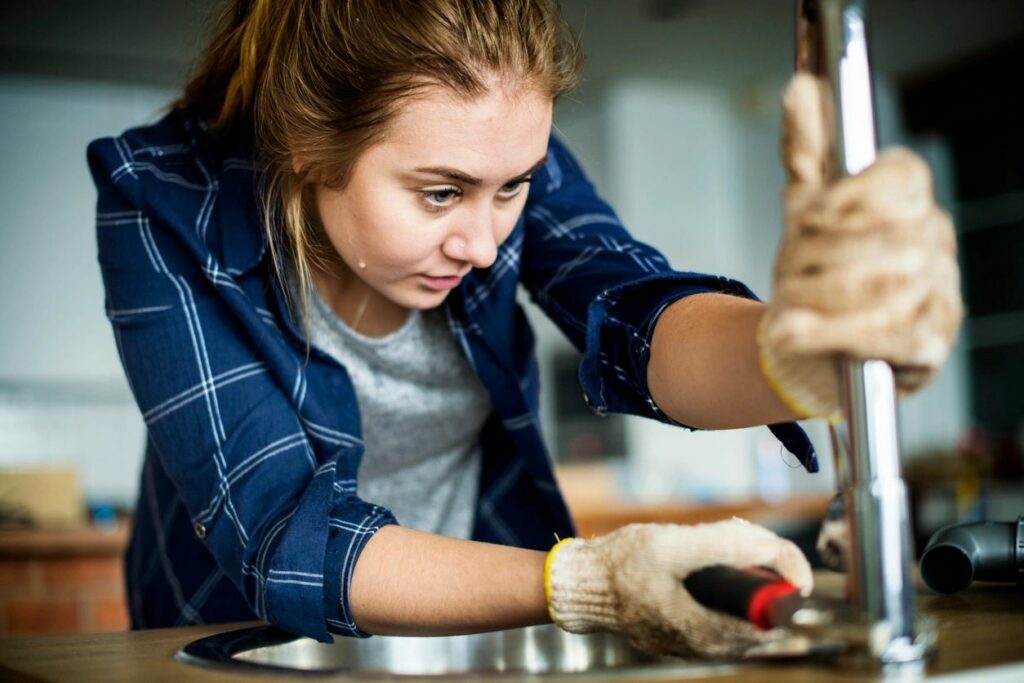Every person maintains his or her own assumption when it comes to Why It's Important to Fix Leaky Faucets.

Trickling faucets might seem like a small aggravation, yet their influence surpasses just the aggravation of the noise. From wasting water to sustaining unneeded economic prices and health risks, disregarding a leaking tap can result in different consequences. In this short article, we'll explore why it's critical to address this typical household problem immediately and efficiently.
Waste of Water
Environmental Impact
Leaking faucets contribute considerably to water wastefulness. According to the Epa (EPA), a single tap trickling at one drip per secondly can throw away more than 3,000 gallons of water each year. This not just strains water sources however also impacts ecological communities and wild animals dependent on them.
Financial Expenses
Enhanced Water Expenses
Past the ecological impact, dripping faucets can blow up water costs considerably. The collected wastage with time equates right into higher utility expenses, which can have been prevented with timely repair work.
Possible Residential Or Commercial Property Damages
In addition, extended trickling can lead to damage to fixtures and surfaces bordering the tap. Water buildup can trigger discoloration, rust, and even structural concerns if left ignored, resulting in extra repair expenses.
Wellness Worries
Mold and Mildew Growth
The consistent presence of dampness from a trickling tap creates a suitable atmosphere for mold and mildew development. These fungis not only compromise interior air high quality but likewise present wellness threats, especially for individuals with breathing conditions or allergies.
Waterborne Illness
Stationary water in trickling taps can become a breeding ground for germs and various other microorganisms, raising the threat of waterborne illness. Pollutants such as Legionella germs prosper in stagnant water, potentially resulting in major diseases when ingested or breathed in.
Do it yourself vs. Professional Repair
Pros and Cons of Do It Yourself Repair Work
While some may try to repair a dripping tap themselves, DIY fixings come with their own collection of challenges. Without appropriate expertise and tools, do it yourself efforts can aggravate the problem or bring about incomplete repairs, extending the trouble.
Benefits of Working With a Professional Plumber
Employing a specialist plumber ensures that the underlying root cause of the trickling tap is dealt with successfully. Plumbings possess the proficiency and devices to identify and repair faucet issues effectively, saving time and reducing the threat of more damages.
Step-by-Step Overview to Taking Care Of a Dripping Tap
Tools Required
Prior to trying to take care of a leaking faucet, collect the essential tools, consisting of a flexible wrench, screwdrivers, replacement components (such as washing machines or cartridges), and plumber's tape.
Common Tap Issues and Their Solutions
Determine the type of tap and the particular concern triggering the drip. Common problems consist of worn-out washing machines, corroded valve seats, or damaged O-rings. Refer to maker instructions or on the internet tutorials for detailed guidance on repair work.
Safety nets
Normal Upkeep Tips
To prevent leaking taps, do regular upkeep such as cleaning aerators, examining for leaks, and replacing worn-out parts immediately. In addition, consider installing water-saving devices or updating to extra reliable components.
Relevance of Prompt Services
Resolving trickling taps as soon as they're observed avoids further water wastage and potential damages, inevitably conserving both water and cash over time.
Impact on Building Value
Perception of Well-Maintained Property
Keeping a building in good condition, consisting of attending to maintenance problems like leaking faucets, improves its regarded value and worth among prospective customers or tenants.
Influence on Resale Worth
Properties with well-kept plumbing components, consisting of taps, command greater resale values in the real estate market. Dealing with leaking taps can add to a favorable impact throughout home examinations and arrangements.
Ecological Obligation
Private Contribution to Conservation
Taking responsibility for fixing dripping taps lines up with wider initiatives toward water conservation and ecological sustainability. Every person's actions jointly make a substantial effect on preserving priceless resources.
Lasting Living Practices
By prioritizing timely fixings and adopting water-saving practices, individuals contribute to sustainable living practices that profit both existing and future generations.
Verdict
Attending to a leaking faucet goes beyond mere ease; it's a vital step towards saving water, decreasing financial prices, and securing health and wellness and residential or commercial property. Whether through do it yourself repair work or specialist help, taking action to deal with leaking taps is a small yet impactful means to promote liable stewardship of resources and contribute to a much healthier, much more lasting future.
How to Fix a Leaky Faucet: Step-by-Step Repair Guide
A leaky faucet may seem like a simple annoyance, but if it's not fixed promptly, that leak could cost hundreds to potentially thousands. From water damage to mold, mildew, and high water bills, even a tiny leak can be catastrophic if left unattended. Damage like this can even affect the overall value of your home, so it's important to take the right approach for leaky faucet repair. You may need the help of a plumber in some cases, but we've got a few tips you can try on how to fix a leaky faucet before calling the pros.
Four Faucet Types
When you're learning how to fix a leaky faucet, the first step is knowing what kind of faucet you're working with! There are four common types.
Cartridge Faucets
Cartridge faucets come in one- or two-handled varieties. In one-handled cartridge faucets, hot and cold water combines in a single cartridge. In the two-handled versions, hot and cold water are controlled separately and mixed in the faucet.
Ball Faucets
Ball faucets have a single lever you push up and down to adjust the pressure and rotate to change the temperature. A slotted metal ball controls the amount of water allowed into the spout.
Compression Washer Faucets
They're the oldest type of faucet, but they're still used in many homes — especially older ones. Compression faucets have two separate handles that, when turned, raise or lower the washer that seals a water valve. This valve stops water from flowing through the faucet when it is turned off.
Disc Faucets
Disc faucets rarely need to be repaired due to their maintenance-free design. The water flow is controlled by two discs — the upper one raises and lowers against a fixed lower disc, creating a watertight seal. If your disc faucet starts leaking, you may need to replace the seals or clean residue buildup from the inlets.
Fixing a Leaky Faucet
Step 1: Turn Off the Water
Whether you're learning how to fix a leaky bathtub faucet or how to fix a leaky kitchen faucet, always turn off the water supply to your working area when you're fixing a leak. The last thing you want is a flood added to your list of things to fix.
Look for the shutoff valves below your sink or around the tub and turn them clockwise to stop the water flow. If your faucet doesn't have shutoff valves, you may need to turn off the water for the whole house. Check to make sure it's off by turning the faucet on. If nothing comes out, you're ready to start the repair.
Step 2: Take Apart the Faucet
How you disassemble your faucet depends on the type of fixture you have. You can use a flathead screwdriver to remove the caps on top of the handle or handles for cartridge and compression faucets. Inside, you should see handle screws. Unscrew these with a screwdriver to remove the handle.
Disc- and ball-style faucets will typically have an inlet screw near the handle, and removing that will reveal the interior of the faucet.
Detach the Valve Stem
For cartridge- and compression-style faucets, you'll see the inner valve stem or cartridge once you remove the faucet handles. If you have a compression faucet, unscrew the brass valve stem. If you have a cartridge faucet, pull out the cartridge. If your cartridge has been in place for a while, it may require some tools or extra force to remove it due to mineral deposits.
Examine and Replace Parts
Once you've removed the parts, check them out to confirm what needs to be replaced. You may see corroded rubber washers, O-rings, stems, or cartridges. On a ball-style faucet, check the seats and springs for damage.
If you need to repair a leaky disc faucet, check the inlet and seals on the lower disc.
Once you determine what parts must be replaced, visit your local hardware store. Bring the damaged parts with you to ensure you can purchase the correct components to replace them.
Clean Valves and Faucet Cavity
If you've removed a stem or cartridge, you may notice mineral buildup in the faucet's threads. Use white vinegar to clean the valve seat by soaking it for a few minutes, then scrub it away with a soft toothbrush and rinse with warm water. You can also clean the interior of the faucet in the same way.
Reassemble the Faucet
Once your faucet is cleaned and the required parts have been replaced, it's time to reassemble it. Put the pieces back together and slowly turn the water supply back on. Doing this slowly is crucial because too much initial water pressure can damage the new hardware you've just installed.
https://homewarranty.firstam.com/blog/how-to-fix-leaky-faucet

Do you appreciate more info about Why It's Important to Fix Leaky Faucets? Create a short review directly below. We will be glad to find out your views about this write up. We hope that you visit us again later on. Do you know about somebody else who is excited about the topic? Do not hesitate to share it. Thanks so much for going through it.